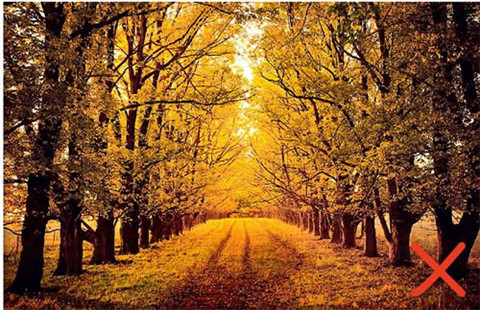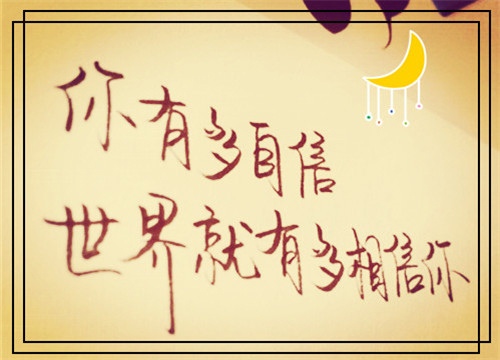
关于中国传统文化的英语作文
Culture of China The Culture of China is home to one of the world's oldest and most complex civilizations. China boasts a history rich in over 5,000 years of artistic, philosophical, political, and scientific advancement. Though regional differences provide a sense of diversity, commonalities in language and religion connect a culture distinguished by such significant contributions such as Confucianism and Taoism. Confucianism was the official philosophy throughout most of Imperial China's history and strongly influenced other countries in East Asia. Mastery of Confucian texts provided the primary criterion for entry into the imperial bureaucracy.With the rise of Western economic and military power beginning in the mid-19th century, Western systems of social and political organization gained adherents in China. Some of these would-be reformers rejected China's cultural legacy, while others sought to combine the strengths of Chinese and Western cultures.China is a unified nation consisting of many different ethnic groups. Fifty-six different ethnic groups make up the great Chinese national family. Because the Han people accounts for more than ninety percent of China's population, the remaining fifty-five groups are generally referred to as ethnic minorities. Next to the majority Han, the Mongolian, Hui, Tibetan, and Uygur peoples comprise the largest ethnic groups. Although China's ethnic minorities do not account for a large portion of the population, they are distributed over a vast area, residing in every corner of China.Particularly since the implementation of China's opening and reform policy, the central government has increased investment in minority areas and accelerated their opening to the outside world. This has resulted in an upsurge of economic development in these areas. Each of China's ethnic minority groups possesses a distinctive culture. The Chinese government respects minority customs, and works to preserve, study, and collate the cultural artifacts of China's ethnic minority groups. The government vigorously supports the development of minority culture and the training of minority cultural workers, and fosters the development of traditional minority medicine.The relation among China's ethnic groups can be described as overall integration, local concentration, mutual interaction. Concentrations of ethnic minorities reside within predominantly Han areas, and the Han people also reside in minority areas, indicating that there has been extensive exchanges among China's ethnic groups since ancient times. With the development of the market economy, interaction among ethnic groups has become even more active in the areas of government, economics, culture, daily life, and marriage. Linked by interdependence, mutual assistance, and joint development, their common goals and interests creating a deep sense of solidarity, China's ethnic groups resemble a great national family, together building Chinese civilization.
与中国传统文化有关的英语单词和短语
与中国传统文化有关的英语单词和短语与中国传统文化有关的英语单词和短语1.元宵节:LanternFestival2.刺绣:embroidery3.重阳节:Double-NinthFestival4.清明节:Tombsweepingday5.剪纸:PaperCutting6.书法:Calligraphy7.对联:(SpringFestival)Couplets8.象形文字:Pictograms\\\/PictographicCharacters9.人才流动:BrainDrain\\\/BrainFlow10.四合院:Siheyuan\\\/Quadrangle11.战国:WarringStates12.风水:Fengshui\\\/GeomanticOmen13.铁饭碗:IronBowl14.函授部:TheCorrespondenceDepartment15.集体舞:GroupDance16.黄土高原:LoessPlateau17.红白喜事:WeddingsandFunerals18.中秋节:Mid-AutumnDay19.结婚证:MarriageCertificate20.儒家文化:ConfucianCulture21.附属学校:Affiliatedschool22.古装片:CostumeDrama23.武打片:ChineseSwordplayMovie24.元宵:Tangyuan\\\/SweetRiceDumpling(Soup)25.一国两制:OneCountry,TwoSystems26.火锅:HotPot27.四人帮:GangofFour28.《诗经》:TheBookofSongs29.素质教育:Essential-qualities-orientedEducation30.《史记》:HistoricalRecords\\\/RecordsoftheGrandHistorian31.大跃进:GreatLeapForward(Movement)32.《西游记》:TheJourneytotheWest33.除夕:ChineseNewYear’sEve\\\/EveoftheSpringFestival34.针灸:Acupuncture35.唐三彩:Tri-colo
形容中国优秀传统文化的句子有哪些
The information revolution, the development of mass media and the achievements in science and technology have doubtlessly ushered us in a rapidly progressing society, where we may have no time to talk about our traditional culture. In the city, no one can escape from the fast pace.We eat the popularized fast food and enjoy the popularized fast food culture. Since we get so used to such fast things that many traditional things have been neglected, some people believe that the traditional culture will gradually be lost, but I think it will never be lost.Although entertainments are in abundance nowadays, traditional cultures still continue to dominate.We still regard going to a concert as a luxury. Many classic books touch a string from generation to generation in spite of time and space.And we are still moved by the inspirational spirits of our great ancestors.Traditional festivals remind us of our disposition to the traditional culture. Our relief in traditional culture gets ready to revive at any time.To some traditional cultures that are on decline, we have taken active measures to conserve them. Experts have come up with proper advice on protecting such cultures. Many volunteers have dedicated themselves to studying them. First and foremost,more and more people have discerned the importance of the traditional culture. Therefore, we are sure that our efforts will lead to a brilliant future.If a culture wants to gain an eternal life, it should change itself to cater to the people in its age. So does our traditional culture. Traditional cultures adhering to modern means appear rigorous. For example, we make CDs for classic music so that it can not only meet modern needs but also spread further and more successfully in the modern world. The appearance of traditional culture changes, but the essence will never change and will be well accepted.There is no need to worry about whether our traditional culture will be lost. It is an important heritage of the whole human race. No culture, no mankind. We cherish the traditional culture as we cherish our blood in our body. The traditional culture lies in life, forever continuing.信息革命,大众媒介的发展和科学技术的成就,迎来了一个迅速恶化的社会里们可能没有时间来谈论我们的传统文化我们。
在城市里,没有人能逃脱从快速pace.We吃快餐的普及推广,享受“快餐”文化。
由于我们习惯于这样快,很多传统的东西被忽视的事情,有些人认为,传统文化将逐渐流失,但我觉得它永远不会被lost.Although娱乐丰富的今天,传统文化依然继续dominate.We仍然认为要作为一个豪华演唱会。
许多经典书籍触摸一代又一代的字符串尽管在时间和space.And但我们仍会受到我们伟大ancestors.Traditional精神感动鼓舞人心的节日提醒我们处理我们的传统文化。
我们在传统文化得到救济随时准备恢复一些传统文化的衰落是,我们已采取积极措施,以保护他们t
中国传统文化名言(英文翻译)
Chinese Traditional Cultural Proverbs
总结一下每个中国传统文化活动的意义是什么。
(英语作文需要用)
了解中国传统文化有以下重要意义:1、国家的强盛离不开文化的支撑。
中华优秀传统文化是中华民族的重要文化软实力,为中华民族发展提供强大的精神力量,只有把中华优秀传统文化更好地融入中国特色社会主义建设中,才能造就实现中国梦的强大文化力量。
2、中国传统文化是中国化马克思主义的构成要素,正是马克思主义与中国传统文化在中国大地上的互补共生,才最终形成了富有活力的中国化马克思主义,指导中国革命和建设不断取得胜利。
加强中华传统文化教育,也有助于中国特色社会主义理论体系与时俱进、长葆活力。
3、青少年是实现中国梦的生力军。
当前,加强中华优秀传统文化教育,对于引导他们坚定走中国特色社会主义道路、实现中华民族伟大复兴中国梦的理想信念,具有重大而深远的历史意义。
4、继承和发扬传统优秀的传统文化,可促进国家民族认同、凝聚人心、激发民族意志,可扭转一些社会成员诚信缺失、道德失范,有助於维护社会稳定与和谐。
中国优秀传统文化的句子
1. 中国书法是一门古老的,历史悠久,也是中引以为自文化瑰宝之一。
书法大体可分为篆书、隶书书、行书、草书等五种,具有很高的审美价值。
2. 西湖龙井,铁观音,中国的茶香就是清;女儿红、老白干,中国的酒就是醇。
中国文化五千年,传统美德万里传。
3. 太极清影武当山,少林神功少室练,峨眉刚劲柔中显,南来圣地佛山,功夫盛名远传。
留恋霍家佛家拳,慕名方家掌中仙。
功夫中华象征,回想百味丹田。
4. 官哥汝定钧,五大名窑宋扬名,一朵青花绽放,元瓷从此名久远。
斗彩五彩明渐起,惹一方妖艳。
清法郎色彩鲜,名扬中外瓷中冠。
无色传奇弥漫,中华瓷器名远。
5. 夏商与西周,东周分两段,三分魏蜀吴,一统秦两汉。
华夏上下五千年,历朝历代都是奇迹的历史印记。
6. 国粹京剧美名扬,生旦净末各方长,抑扬顿挫声貌聚,小小舞台现沧桑。
中华戏曲一绝创,各地曲目更多样,人生犹如戏中人,你方唱罢我登场。
7. 中国传承了五千年的文化,成为这世界上的一朵奇葩。
儒家思想遍天下,中国瓷器人人夸。
8. 中医在我国古代起源,是我国优秀文化遗产,记载着国人同疾病做斗争的经验,承载着人类医学发展的优良关念,愿中医发扬光大,渊源流长。
9. 古往今来我不怕,孔子文化传天下,全球掀起国学热,孔子学院中外建,国学精髓世界扬。
10. 中华文化,亦叫华夏文化、华夏文明,即汉族文化,汉文化。
且流传年代久远,地域甚广,以文化圈概念亦被称为“汉文化圈”。
11. 要说民族文化,必说琴棋书画;妙在收心养性,培养独特文明;塑造人格保证,追求脱俗意境;民族传统之镜,折射博大精深。
12. 中国的四大发明(火药、指南针、印刷术、造纸术)先后传到西方后,对于促进西方资本主义社会的形成和发展,起到了重要作用。
13. 漠北荒凉战场,英雄儿女久传扬,江南小河流水巷,才子佳人妙文章。
马蹄行舟万里游,一方嘶鸣一方舟,江河湖海大中华,渊源流长几多秋。
14. 干劲强劲劲非劲,到处共处处非处。
强壮强迫非倔强,勿将长大念为长。
逮捕不是逮老鼠,地壳更非鸡蛋壳。
瞠木结舌不念堂,中华文化永无疆。
15. 我国的传统文化源远流长、博大精深。
其实,传统文化的气息我们随时随地都能感受得到。
16. 中国传统节目丰富多彩,让我们的传统节日永远继承下去,让我们的传统文化光辉灿烂。
17. 生活中,我们处处可以感受到中国丰富多采的传统文化,这些传统的东西是祖国的瑰宝,是需要我们代代相传,一直传承下去。
18. 每个国家都有自己独特的传统文化,我们国家也不例外。
而中华美德正是所有文化中独一无二的瑰宝,我们都是中国人,自然要理所当然地继承我们祖先给予我们的一笔丰厚的礼物。
19. 中国有五千年的文明史,延续到今天,处处展现出丰富多彩的中国传统文化。
20. 中华民族的传统文化真是一座巨大的宝库,让我们长了知识,又让我们和祖国的缘分更近一点
21. 汉文化反而在日本有较多保留,如和服是根据汉服仿制;日本刀是由唐刀演化而来,日本的音乐、建筑保留了大量汉族的古曲和建筑样式(特别是唐代)。
22. 民族文化源于实践,历史记录延续表现,民间基础特色流源,经济全面社会发展,文化熔铸民族活力,维系国家和平统一,融合文化政治经济,提升强大综合国力。
23. 道家无为清净,墨家非攻兼爱,法家法治天下,儒家礼德操守,韩非兵家论道,战国风云汹涌,百家争鸣,思想勃发,传一代英雄儿女情。
24. 汉唐以后,中国传统文化,包括儒释道思想以及文字、绘画、建筑、雕刻等等,传入了日本等国。
25. 中华文化五千年,煌煌巨著随处见,春秋战国有孔孟,百花争鸣巨人间,汉赋唐诗广流传,宋词元曲非等闲,明清小说人知晓,现代文艺领风骚
26. 华夏文明何其多,四大发明最伟大,辨别方向指南针,人工活字印刷术,不忘造纸与火药,造福人类促发展
27. 在中国传统文化中,儒家文化占据主导地位,她兼收并蓄,发展至今,可见其魅力所在。
28. 中华传统文化源远流长,博大精深,这是几千年来中国人达成的共识。
29. 中国传统文化不是摆几本线装书和假古董,也不是穿套汉服或唐装,更不是风水、堪舆、预测之学。
通过去芜存菁,国学中的精华不仅属于中国,也属于世界。
30. 多学习中国传统文化,多看点国学,能滋养一个民族的精神气质。
31. 中国传统文化中春节时家人团聚,强化了亲缘关系和孝道伦理等因素,每年有这么一个机会一家人欢欢喜喜辞旧迎新,总结过去的一年,为新一年积蓄力量和做精神准备。
32. 中国传统文化中俯拾即是的为人之要、处世之道、治理之策,当是领导干部修齐治平的优秀教材。
“欲穷千里目,更上一层楼”,“一花独放不是春,百花齐放春满园”……33. 中国传统文化国学之大美,美不尽言,美不胜收,美轮美奂,然大美无声,非虚妄浅薄者可闻,国学典籍含英咀华,默而无言,与你遥遥相对,无声的召唤令你心驰神往,当你怀一颗赤子之心走近国学,感悟国学,体味国学,践行国学多时,你会蓦然发现,国学大美,其实已在你心里。
34. 中国作为五大文明古国之一,传统文化源远流长,不仅其内容极为丰富,涉及面也极为广泛,儒学这一文化符号就是中国传统文化心理结构的重要构成部分之一,它对我国人民的生活及思维方式都有着极为深刻的影响。
35. 庄子曰:“天地有大美而不言。
”国学源自天地,从伏羲仰天俯地而悟易经,到屈原漫游天地而得九歌,再到竹林七贤隐居山林而通三玄,古之高士,欲有所得,无不与天地相交接。
36. 源远流长、博大精深的中华民族文化,如同耀眼的星座,光耀了悠悠五千年。
其中的许多精华,被代代相传,价值历久而弥新,这就是我们所说的国学文化经典。
37. 中国传统文化第二个魅力是文学艺术的魅力。
中国人只要读过书的,都多少知道一些古诗古词和一些文学名著。
但中国古典文学的美实在是很妙曼优美,给人以无尽的遐想和怡悦的感受。
38. 提到中国的传统文化,可谓无人不知,无人不晓。
中华民族历史源远流长,传统文化博大精深,它足以使中国人、海外华人引以荣耀和自豪,也是中华民族的重要凝聚力。
39. 传统文化中医学、养生、方术的魅力。
中医是中华传统文化中的一个重要部分。
40. 历史悠久远闻名,古玩字画至今行,康熙五彩元青花,价值连城代代夸,白石大千唐伯虎,字画远扬皆五湖,身在文化名古国,自豪感动受鼓舞
41. 中华民族历史优,传统文化流传久,炎黄子孙代代传,发扬光大人人承
42. 中国传统文化在明清之际,通过西方耶稣会士,通过东学西渐,还传播到了欧洲一些国家。
43. 茶圣陆羽茶文化,一本《茶经》传天下,一杯清茶意悠悠,举手投足显风流,饮茶静心能生津,静坐品味悟茶道,参悟人生苦与乐
44. 陶瓷故乡在中国,瓷都当推景德镇;陶器出现在史前,瓷器始于东汉间;洁白如玉薄若纸,透明如镜能照面;生活起居离不开,陶瓷文明震世界。
45. 中华民国建立后,“中国”正式成为中国的国家称谓。
中国为世界文明古国,有五千多年的悠久文化与文明史。
46. 注重道德修养也是传统文化中重要的构成部分。
谈传统文化不能不谈道德修养,学传统文化的人没有不重道德修养的,学传统文化到一定程度必然会走向自觉注重道德修养。
47. 中国传统文化发展经历了五千年,其间既有暴风骤雨式的革命,亦有和风细雨般的变革,但最后都殊途同归,目的只有一个:维系中华民族这个大家庭并推动社会不断向前发展。
48. 中国传统文化中没有哲学的门派,哲学思想散见于佛、道、儒各家著作中。
易经描述宇宙产生,大致是无极生太极,太极生两仪。
49. 几天的学习,我感到了中华传统文化巨大的魅力和无尽的感召力,感染到我,荡漾着我的灵魂,我在不断地拷问着自己:对年迈的、日渐衰老的父母,我做到了么
50. 中华文化上下五千年,历史悠久,底蕴深厚。
在浩瀚的历史长河中,中国传统文化展现出独特的魅力,让世界为之赞叹,让国人为之骄傲
关于中国传统文化的英语作文
这些东西以再网上查到长城的传说 In the north of China, there lies a 6,700-kilometer-long (4,161-mile-long) ancient wall. Now well-known as the Great Wall of China, it starts at the Jiayuguan Pass of Gansu Province in the west and ends at the Shanhaiguan Pass of Hebei Province in the east. As one of the Eight Wonders in the world, the Great Wall of China has become the symbol of the Chinese nation and its culture. Lots of beautiful legends and stories about the Great Wall took place following along the construction, and since that time these stories have spread around the country. Those that happened during construction are abundant, such as Meng Jiangnu's story and the legend of the Jiayuguan Pass. Meng Jiangnu's story is the most famous and widely spread of all the legends about the Great Wall. The story happened during the Qin Dynasty (221BC-206BC). It tells of how Meng Jiangnu's bitter weeping made a section of the Great Wall collapse. Meng Jiangnu's husband Fan Qiliang was caught by federal officials and sent to build the Great Wall. Meng Jiangnu heard nothing from him after his departure, so she set out to look for him. Unfortunately, by the time she reached the great wall, she discovered that her husband had already died. Hearing the bad news, she cried her heart out. Her howl caused the collapse of a part of the Great Wall. This story indicates that the Great Wall is the production of tens of thousands of Chinese commoners. Another legend about the Jiayuguan Pass tells of a workman named Yi Kaizhan in the Ming Dynasty (1368BC-1644BC) who was proficient in arithmetic. He calculated that it would need 99,999 bricks to build the Jiayuguan Pass. The supervisor did not believe him and said if they miscalculated by even one brick, then all the workmen would be punished to do hard work for three years. After the completion of the project, one brick was left behind the Xiwong city gate. The supervisor was happy at the sight of the brick and ready to punish them. However Yi Kaizhan said with deliberation that the brick was put there by a supernatural being to fix the wall. A tiny move would cause the collapse of the wall. Therefore the brick was kept there and never moved. It can still be found there today on the tower of the Jiayuguan Pass. In addition to the above-mentioned stories about the construction of the Great Wall, there are also plenty of stories about current scenic spots. A famous one is the legend of the Beacon Tower. This story happened during the Western Zhou Dynasty (11th century BC-711 BC). King You had a queen named Bao Si, who was very pretty. King You liked her very much, however Bao Si never smiled. An official gave a suggestion that setting the beacon tower on fire would frighten the King's subjects, and might make the queen smile. King You liked the idea. The subjects were fooled and Bao Si smiled at the sight of the chaos. Later enemies invaded Western Zhou, King You set the beacon tower on fire to ask for help. No subjects came to help because they had been fooled once before. Thus, King Zhou was killed by the enemy and Western Zhou came to an end. Beautiful stories and legends about the Great Wall help to keep alive Chinese history and culture. In each dynasty after the building of the Great Wall, many more stories were created and spread. 历史 No one can tell precisely when the building of the Great Wall was started but it is popularly believed that it originated as a military fortification against intrusion by tribes on the borders during the earlier Zhou Dynasty. Late in the Spring and Autumn Period (770 BC - 476 BC), the ducal states extended the defence work and built great structures to prevent the attacks from other states. It was not until the Qin Dynasty that the separate walls, constructed by the states of Qin, Yan and Zhao kingdoms, were connected to form a defensive system on the northern border of the country by Emperor Qin Shi Huang (also called Qin Shi Huangdi by westerners or the First Emperor). After the emperor unified the country in 214 BC, he ordered the construction of the wall. It took about ten years to finish and the wall stretched from Linzhao (in the eastern part of today's Gansu Province) in the west to Liaodong (in today's Jilin Province) in the east. The wall not only served as a defence in the north but also symbolized the power of the emperor. From the Qin Dynasty onwards, Xiongnu, an ancient tribe that lived in North China, frequently harassed the northern border of the country. During the Han Dynasty, Emperor Wu (Han Wu Di), sent three expeditions to fight against the Xiongnu in 127 BC, 121 BC and 119 BC. The Xiongnu were driven into the far north of the Gobi. To maintain the safety of the Hexi Corridor (today's Gansu Province), the emperor ordered the extension of the Great Wall westward into the Hexi Corridor and Xinjiang region. The ruins of the beacon towers and debris of the Han Wall are still discernible in Dunhuang, Yumen and Yangguan. A recent report shows that ruins of the Han Wall have been discovered near Lopnur in China's Xinjiang region. Further construction and extensions were made in the successive Northern Wei, Northern Qi and Sui dynasties. The present Great Wall in Beijing is mainly remains from the Ming Dynasty (1368 - 1644). During this period, bricks and granite were used when the workers laid the foundation of the wall and sophisticated designs and passes were built in the places of strategic importance. To strengthen the military control of the northern frontiers, the Ming authorities divided the Great Wall into nine zones and placed each under the control of a Zhen (garrison headquarters). The Ming Wall starts from Yalujiang River (in today's Heilongjiang Province), via today's Liaoning, Hebei, Inner Mongolia, Shanxi, Shaanxi, Ningxia provinces, to Guansu. The total length reaches 12,700 li (over 5,000 kilometers). The Shanhaiguan Pass and the Jiayuguan Pass are two well-preserved passes at either end. Today, the Wall has become a must-see for every visitor to China. Few can help saying 'Wow!' when they stand on top of a beacon tower and look at this giant dragon. For centuries, the wall served succeeding dynasties as an efficient military defence. However, it was only when a dynasty had weakened from within that invaders from the north were able to advance and conquer. Both the Mongols (Yuan Dynasty, 1271-1368) and the Manchurians (Qing Dynasty, 1644-1911) were able take power because of weakness of the government and poverty of the people but never due to any possibility of weakness of the Wall.或者The Great Wall was first built in the Spring and Autumn Period and it have a history over 2.000 years. The Great Wall, that is called “the ten-thousand-li Great Wall, is actually more than 6000 kilometers long, 6-7 meters high and 4-5 meters wide. Every a few hundred meters along the Great Wall there are watchtowers. We Chinese are proud of in the Great wall because it is one of the wonders in the world and it stands for China.. Today the Great Wall becomes a famous place of interest in the world. Every year, hundreds of thousands of people, not only from China from also all over the world, come to visit it.



